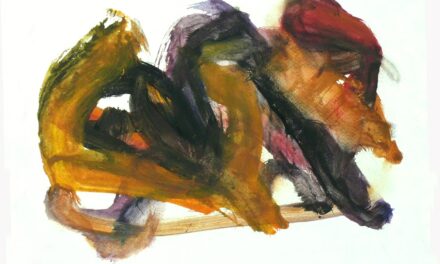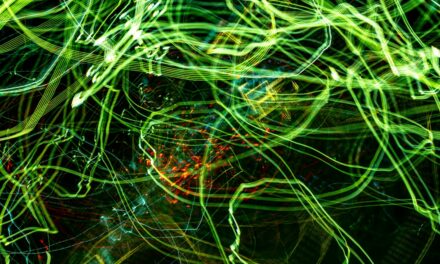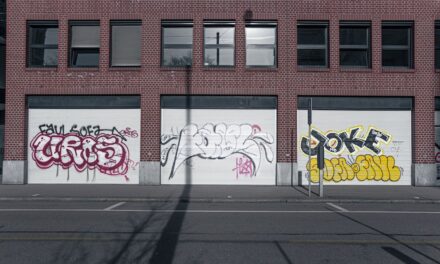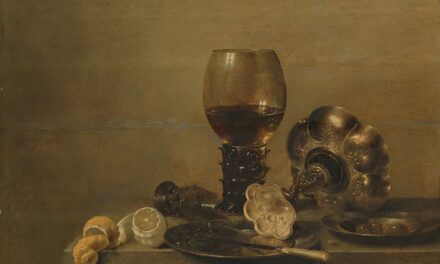Leonardo da Vinci, born on 15 April 1452 in Vinci, Italy, was the illegitimate son of a notary and a peasant woman. Despite his modest origins, da Vinci demonstrated an early aptitude for art and science. He received informal education in Latin, geometry and mathematics, which established the foundation for his later intellectual pursuits.
His artistic talents were recognised at a young age, and he was apprenticed to the renowned artist Andrea del Verrocchio in Florence at the age of 14. Under Verrocchio’s guidance, da Vinci refined his skills in painting, sculpture and drawing, and also developed an interest in engineering and anatomy. Da Vinci’s insatiable curiosity and thirst for knowledge led him to study a wide range of subjects, including botany, geology and architecture.
He was a keen observer of nature and the human form, and his sketches and notes reveal his meticulous attention to detail. His early experiences and education laid the groundwork for his multifaceted career as an artist, scientist and inventor. Da Vinci’s diverse interests and intellectual pursuits distinguished him as a true Renaissance man, embodying the spirit of the era’s emphasis on humanism and the pursuit of knowledge.
Summary
- Early Life and Education:
- Born in Vinci, Italy in 1452
- Apprenticed to artist Andrea del Verrocchio
- Studied anatomy and engineering
- Artistic Career and Achievements:
- Known for masterpieces like the Mona Lisa and The Last Supper
- Pioneered techniques like sfumato and chiaroscuro
- Commissioned by powerful patrons like the Medici family
- Scientific and Inventive Mind:
- Keen interest in anatomy and biology
- Designed inventions like flying machines and war machines
- Studied optics and made significant contributions to the field
- Mona Lisa and The Last Supper:
- Mona Lisa known for enigmatic smile and use of sfumato
- The Last Supper depicts the moment Jesus reveals a traitor
- Both paintings showcase da Vinci’s mastery of perspective and composition
- Legacy and Influence:
- Considered one of the greatest artists of all time
- His works continue to inspire and influence artists and scientists
- His notebooks are a treasure trove of ideas and observations
- Personal Life and Relationships:
- Known for being a private and enigmatic figure
- Had close relationships with his pupils and assistants
- Rumoured to have had a complex personal life
- Death and Posthumous Recognition:
- Died in France in 1519
- Left behind a legacy of artistic and scientific achievements
- Continues to be celebrated and studied centuries after his death
Artistic Career and Achievements
Revolutionising Portraiture
Da Vinci’s use of sfumato, a technique of blending tones and colours to create soft transitions between light and shadow, revolutionised the art of portraiture.
Capturing Human Emotion
The enigmatic smile of the Mona Lisa and the expressive gestures of the figures in The Last Supper are testaments to da Vinci’s ability to capture human emotion with unparalleled skill. In addition to his paintings, da Vinci was a prolific draftsman and illustrator. His anatomical studies, such as the Vitruvian Man, are revered for their accuracy and insight into the human body.
Interdisciplinary Approach to Creativity
Da Vinci’s notebooks are filled with detailed sketches of inventions, scientific observations, and artistic studies, showcasing his interdisciplinary approach to creativity. His contributions to the art world continue to inspire and influence artists to this day, cementing his legacy as one of the greatest masters of the Renaissance.
Scientific and Inventive Mind

Leonardo da Vinci’s scientific and inventive mind was ahead of its time, as he made groundbreaking discoveries in various fields. His studies of anatomy were revolutionary, as he conducted dissections to gain a deeper understanding of the human body. Da Vinci’s anatomical drawings are not only artistically exquisite but also scientifically accurate, demonstrating his keen observation skills and meticulous attention to detail.
His insights into the workings of the human body laid the foundation for modern medical science. In addition to his anatomical studies, da Vinci was a visionary inventor who conceptualized numerous machines and devices that were far ahead of their time. His designs for flying machines, such as the ornithopter and parachute, foreshadowed the future of aviation.
Da Vinci also sketched plans for war machines, hydraulic systems, and even a robot knight. His inventive mind knew no bounds, and his designs continue to inspire engineers and inventors today. Da Vinci’s scientific curiosity and innovative spirit exemplify his status as a true polymath whose contributions transcend time.
Mona Lisa and The Last Supper
The Mona Lisa and The Last Supper are two of Leonardo da Vinci’s most famous works, each showcasing his artistic genius in different ways. The Mona Lisa, painted between 1503 and 1506, is a portrait of Lisa Gherardini, known for her enigmatic smile that has captivated viewers for centuries. Da Vinci’s use of sfumato creates a sense of mystery and depth in the painting, as the figure gazes directly at the viewer with a subtle yet enigmatic expression.
The Mona Lisa’s timeless allure lies in its ability to convey a sense of intimacy and intrigue that transcends time. The Last Supper, completed in 1498, is a monumental fresco depicting the final meal shared by Jesus and his disciples before his crucifixion. Da Vinci’s composition and use of perspective in The Last Supper are groundbreaking, as he creates a sense of drama and emotion through the positioning of the figures and the architectural elements of the scene.
The painting’s enduring impact lies in its ability to convey the emotional intensity of the moment while also showcasing da Vinci’s mastery of spatial representation. Both the Mona Lisa and The Last Supper stand as testaments to da Vinci’s unparalleled skill as a painter and his ability to capture the complexities of human emotion.
Legacy and Influence
Leonardo da Vinci’s legacy extends far beyond his lifetime, as his contributions continue to inspire artists, scientists, and inventors across the globe. His interdisciplinary approach to creativity has set a precedent for future generations, encouraging individuals to explore diverse fields of knowledge and seek connections between art and science. Da Vinci’s anatomical studies have had a lasting impact on medical science, while his inventive designs have influenced modern technology and engineering.
In the art world, da Vinci’s paintings remain iconic symbols of artistic excellence and continue to captivate audiences with their timeless beauty. The Mona Lisa and The Last Supper are revered as masterpieces that have shaped the course of art history and set new standards for artistic expression. Da Vinci’s legacy as a polymath and visionary thinker has left an indelible mark on human culture, inspiring countless individuals to pursue their passions with curiosity and creativity.
Personal Life and Relationships

Da Vinci’s Private Life
Despite his enduring legacy as a Renaissance polymath, Leonardo da Vinci led a relatively private personal life. He never married or had children, and little is known about his romantic relationships or personal affairs. Da Vinci’s focus on his intellectual pursuits and artistic career may have contributed to his solitary lifestyle, as he dedicated himself wholeheartedly to his work.
Patronage and Collaborations
Da Vinci’s relationships with his patrons and fellow artists were instrumental in shaping his career and artistic development. He formed close friendships with prominent figures such as Lorenzo de’ Medici and Cesare Borgia, who supported his artistic endeavours and provided him with opportunities to showcase his talents.
Establishing a Reputation
Da Vinci’s collaborative spirit and ability to forge meaningful connections with influential individuals played a crucial role in establishing his reputation as a master artist.
Death and Posthumous Recognition
Leonardo da Vinci passed away on May 2, 1519, at the age of 67 in Amboise, France. His death marked the end of an era for Renaissance art and science, as one of history’s greatest minds left behind a legacy that would endure for centuries to come. Da Vinci’s contributions to art, science, and invention have been celebrated through numerous posthumous exhibitions, publications, and tributes that honour his enduring impact on human culture.
In recent years, da Vinci’s works have continued to captivate audiences around the world through major retrospectives and exhibitions that showcase the breadth of his artistic achievements. His notebooks have been meticulously studied by scholars and scientists seeking to unravel the secrets of his inventive mind, shedding new light on his contributions to fields such as engineering, anatomy, and astronomy. Da Vinci’s posthumous recognition as a visionary thinker and creative genius serves as a testament to the enduring power of his legacy in shaping our understanding of art, science, and human potential.
If you are interested in learning more about the art movements that followed Leonardo da Vinci’s time, you should check out this article on Impressionism. This movement, which emerged in the 19th century, focused on capturing the fleeting effects of light and atmosphere in their paintings. It was a departure from the realistic style of da Vinci and his contemporaries, and it had a significant impact on the art world.
FAQs
Who was Leonardo da Vinci?
Leonardo da Vinci was an Italian polymath, known for his expertise in various fields such as painting, sculpture, architecture, science, music, mathematics, engineering, literature, anatomy, geology, astronomy, botany, writing, history, and cartography.
When did Leonardo da Vinci live?
Leonardo da Vinci was born on April 15, 1452, in Vinci, Italy, and died on May 2, 1519, in Amboise, France.
What are some of Leonardo da Vinci’s most famous works?
Some of Leonardo da Vinci’s most famous works include the Mona Lisa, The Last Supper, Vitruvian Man, and The Baptism of Christ.
What was Leonardo da Vinci known for?
Leonardo da Vinci was known for his artistic talent, scientific ingenuity, and his ability to combine art and science in his work. He is often referred to as the “Renaissance Man” due to his wide range of interests and expertise.
What is the significance of Leonardo da Vinci’s work?
Leonardo da Vinci’s work is significant because it represents the epitome of the Renaissance period, showcasing the fusion of art and science. His contributions to various fields have had a lasting impact on the world and continue to inspire and influence artists and scientists to this day.




